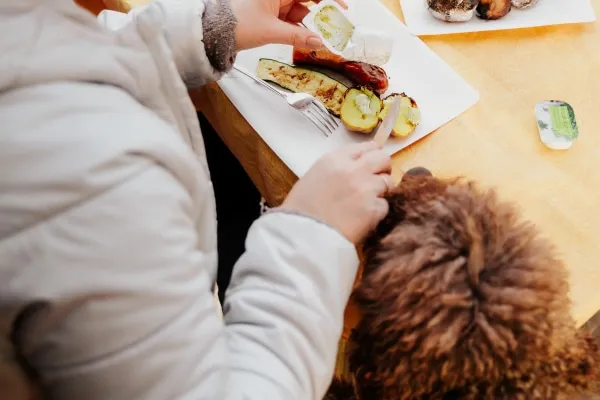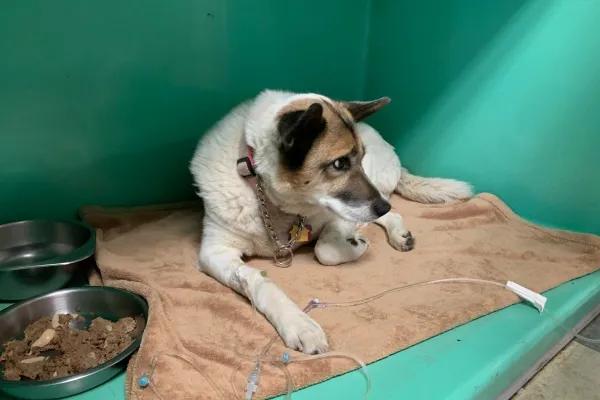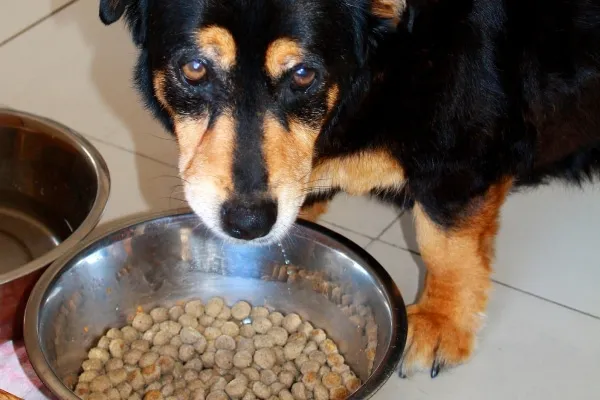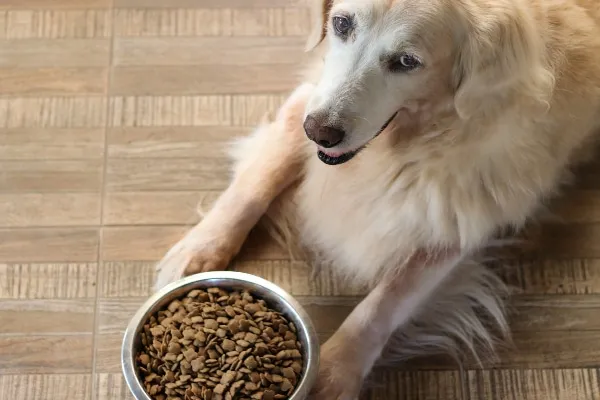As a loving dog parent, few situations are as distressing as seeing your canine companion struck by a sudden, painful illness. Canine pancreatitis, characterized by severe vomiting, diarrhea, and intense abdominal discomfort, is one such condition that can leave you feeling overwhelmed and searching for answers. While managing medications and veterinary visits can be daunting, understanding What Food Can I Feed My Dog With Pancreatitis is often the most confusing aspect of their care. This guide, drawing on expert veterinary insights, aims to provide clear, actionable advice to help you navigate dietary choices for your dog with pancreatitis.
The pancreas, a vital organ nestled beneath the stomach and adjacent to the small intestine, plays a crucial dual role in your dog’s health. Its exocrine function involves producing digestive enzymes (amylase, lipase, protease) that are secreted into the duodenum, the first part of the small intestine. These enzymes remain inactive within the pancreas and only become activated upon reaching the duodenum, where they begin breaking down carbohydrates, fats, and proteins from food. Additionally, the pancreas also functions as an endocrine gland, producing hormones like insulin and glucagon, which regulate blood sugar levels.
Understanding Pancreatitis in Dogs
Pancreatitis is, simply put, an inflammation of the pancreas. This inflammation can lead to a breakdown of the protective mechanisms that keep digestive enzymes inactive while they are still inside the pancreas. When these enzymes activate prematurely within the organ, they begin to digest the pancreatic tissue itself, and sometimes even adjacent organs. This gruesome process causes significant pain, inflammation, and can be life-threatening.
What Causes Pancreatitis?
The precise cause of pancreatitis is often elusive, but several risk factors can increase a dog’s susceptibility to the condition:
- Dietary Indiscretion: Eating new foods, table scraps, very fatty foods, or a sudden change to a high-fat diet are common triggers.
- Obesity: Overweight or obese dogs are at a significantly higher risk. Checking your dog’s body condition score (BCS) can help assess this.
- Endocrine Disorders: Conditions like diabetes mellitus, Cushing’s disease in dogs, and hypothyroidism in dogs can predispose a dog to pancreatitis.
- High Triglycerides: Elevated levels of fat in the blood.
- Gastrointestinal Disease History: Prior issues with the digestive system.
- Toxins and Parasites: Exposure to certain harmful substances.
- Certain Medications: Drugs such as azathioprine, bromide, diuretics, and phenobarbital have been implicated.
 A cute poodle mix dog begging for food from its owner, illustrating the caution needed with table scraps.
A cute poodle mix dog begging for food from its owner, illustrating the caution needed with table scraps.
Types and Symptoms of Pancreatitis
Pancreatitis can manifest in two forms: acute and chronic. Acute pancreatitis is characterized by a rapid onset of severe symptoms, while chronic pancreatitis involves recurrent episodes or persistent inflammation. Symptoms can range from mild in chronic cases to life-threatening in acute ones.
The most common symptoms of pancreatitis in dogs include:
- Vomiting: Present in about 90% of cases.
- Abdominal Pain: Affecting around 58% of dogs, often evidenced by a “prayer position” (front legs down, rear end up).
- Diarrhea: Another common gastrointestinal sign.
- Lethargy: Dogs may be unusually tired or inactive, appearing like a lethargic dog.
- Anorexia: Refusal to eat.
- Dehydration: Due to vomiting and diarrhea.
If your dog exhibits these signs, prompt veterinary attention is crucial. Pancreatitis can quickly escalate into a medical emergency.
Diagnosis and Treatment
Diagnosing pancreatitis typically involves a thorough physical examination, blood tests (which may reveal elevated white blood cells or liver/kidney values), and a specific canine pancreatic lipase immunoreactivity (cPLI) test. An abdominal ultrasound may also be recommended to visualize the pancreas and surrounding organs.
Unfortunately, there’s no single cure for pancreatitis. Treatment focuses on supportive care to manage symptoms and allow the pancreas to heal. This often includes:
- Pain medications to alleviate discomfort.
- Anti-nausea medications to control vomiting.
- Fluid therapy (subcutaneous or intravenous) to combat dehydration and prevent hypovolemic shock.
- Treatment for any concurrent illnesses, like diabetes.
- Dietary modifications, which are critical for supporting recovery and preventing future episodes.
What Food Can I Feed My Dog With Pancreatitis?
The question of what food can I feed my dog with pancreatitis is paramount for recovery and long-term management. For years, veterinarians often recommended fasting dogs with pancreatitis for a day or two to “rest the pancreas.” However, recent research indicates that withholding food can actually be detrimental, potentially leading to complications like decreased gut motility and blood flow to the intestinal tract.
Modern veterinary consensus often favors feeding small, frequent meals as soon as possible. This approach helps maintain gut health, provides essential nutrients, and is generally better tolerated if vomiting still occurs. In some severe cases, where a dog refuses to eat, a veterinarian might suggest syringe feeding, placing a feeding tube, or using appetite stimulants for dogs.
 A sick dog, likely hospitalized for pancreatitis, receiving intravenous fluids for supportive care.
A sick dog, likely hospitalized for pancreatitis, receiving intravenous fluids for supportive care.
The Best Food Choices for Dogs with Pancreatitis
While there’s no single “one-size-fits-all” diet, veterinary experts largely agree that the best foods for dogs with pancreatitis are those that are low in fat and highly digestible. This reduces the workload on the pancreas, allowing it to recover.
Decoding Dog Food Labels: Fat Content 101
To identify suitable low-fat diets, you need to become adept at reading dog food labels. The “guaranteed analysis” panel on commercial dog foods lists nutrient percentages, including “crude fat.” It’s crucial to compare fat content on a dry matter basis (DMB), as comparing “as fed” percentages between wet and dry foods can be misleading due to varying moisture levels. The FDA pet food label page offers valuable information on making this conversion and understanding pet food labels.
For dogs with pancreatitis, most veterinarians recommend diets with a crude fat content of 8% or less on a dry matter basis (DMB) for “low” fat, and up to 15% DMB for “moderate” fat.
Low-Fat Veterinary Prescription Diets
Leading pet food companies like Royal Canin, Hill’s Science Diet, and Purina employ board-certified veterinary nutritionists who develop specialized prescription diets based on extensive research. These diets are often the top recommendation for dogs with pancreatitis due to their precise formulations, high digestibility, and strict quality control. Examples include:
- Purina Pro Plan Veterinary Diets EN Gastroenteric Low Fat Canine Formula (approx. 6.8% crude fat DMB)
- Hill’s Prescription Diet Digestive Care i/d Low Fat Dry Dog Food (approx. 7.5% crude fat DMB)
- Royal Canin Veterinary Diet Gastrointestinal Low Fat Dry Dog Food (approx. 7.1% crude fat DMB)
These diets represent some of the lowest fat options available in prescription formulas. In some instances, your vet might recommend a diet with a moderate fat content, such as Purina Pro Plan’s HA or Royal Canin’s Selected Protein diets, especially if your dog has concurrent food allergies. Unique situations, like managing kidney disease in dogs alongside pancreatitis, may require further dietary adjustments advised by your vet.
 A dog carefully eating a bowl of prescription veterinary diet specially formulated for pancreatitis.
A dog carefully eating a bowl of prescription veterinary diet specially formulated for pancreatitis.
Over-the-Counter Moderate Fat Diets
For some dogs with mild pancreatitis, or when prescription diets are not feasible due to cost or availability, certain over-the-counter diets might be acceptable, but always consult your vet first. Examples of moderate-fat, commercially available diets include:
- Purina Pro Plan Adult Weight Management Large Breed Chicken and Rice
- Hill’s Science Diet Adult Perfect Weight Small & Mini Dog Food
- Royal Canin Small Indoor Adult Dry Dog Food
These diets are not suitable for all dogs with pancreatitis and should only be used under veterinary guidance. Your vet might still recommend a prescription diet or a home-cooked low-fat option. When considering what foods you can feed your dog who is recovering, ensure it’s vetted by your veterinarian.
Home-Cooked Low-Fat Diets
Some dog parents opt for home-cooked meals, perhaps due to allergies to commercial ingredients or a desire for more control over their dog’s diet. While home-cooking can be beneficial, it’s not as simple as feeding plain chicken and sweet potatoes. Creating a nutritionally complete and balanced diet tailored for pancreatitis requires expert knowledge to avoid nutrient deficiencies.
It is highly recommended that home-cooked recipes come from a board-certified veterinary nutritionist. Resources like ACVN.org can help you find a nutritionist in your area, and websites like BalanceIT.com offer balanced recipes. The OSU Nutrition Support Service website also provides valuable information for creating appropriate diets. This ensures the diet is both low in fat and provides all necessary nutrients. If your dog is not eating, a carefully prepared home-cooked meal may be an option, but always under professional guidance on what to feed a dog that’s not eating.
 A golden retriever patiently waiting by its food bowl, ready to eat a specialized diet.
A golden retriever patiently waiting by its food bowl, ready to eat a specialized diet.
Pre-Made Home-Cooked Low-Fat Diets
For those who want the benefits of a home-cooked meal without the extensive preparation, companies like Nom Nom and Just Food for Dogs offer pre-made, low-fat options. These companies typically employ veterinary nutritionists to formulate their diets, offering a convenient and reliable choice. Always consult your veterinarian or one of the company’s veterinary consultants to ensure the chosen meal’s fat content is appropriate for your dog’s specific condition.
How Long Should My Dog Stay on This Diet?
The duration for which your dog needs to remain on a specialized low-fat diet varies significantly. A dog recovering from a single acute episode of pancreatitis may be able to gradually transition back to their original moderate-fat diet after a week or two, provided their original diet is appropriate. However, it’s crucial to make this transition slowly and monitor your dog closely.
For dogs with recurring pancreatitis, those with multiple risk factors, or those with chronic pancreatitis, a low-fat, highly digestible diet is often recommended long-term. This continuous dietary management is key to preventing relapses and maintaining pancreatic health. Your veterinarian will provide the best guidance based on your dog’s individual case.
What Should I Not Feed a Dog With Pancreatitis?
Just as important as knowing what food can I feed my dog with pancreatitis is understanding what to strictly avoid. Since fatty foods and table scraps are primary triggers for pancreatitis, they must be eliminated from your dog’s diet, especially if they have a history of the condition.
Foods like bacon, ham, sausages, grease, and oils are particularly problematic. Even “healthy” fats like coconut oil, often lauded for skin benefits, should generally be avoided for dogs with pancreatitis history due to their high-fat content. Be vigilant about preventing access to human foods, and educate all family members about the critical importance of not sharing snacks. For a broader understanding, review what food a dog cannot eat and what to not feed your puppy in general. Also, be aware of what people food should dogs not eat to prevent other health issues.
 A golden retriever playfully nudging its owner, emphasizing the need to keep human food away from dogs.
A golden retriever playfully nudging its owner, emphasizing the need to keep human food away from dogs.
Confidently Feeding Your Dog with Pancreatitis
Navigating the dietary needs of a dog with pancreatitis can feel overwhelming, but remember that you have valuable resources at your disposal. Your veterinarian is your primary partner in this journey and can offer personalized advice and support. Don’t hesitate to ask them questions or discuss any concerns you have about your dog’s diet.
Additionally, empower yourself by understanding dog food labels and not being afraid to contact pet food manufacturers directly for detailed nutritional information, such as average fat content on a dry matter basis. The path to recovery for your dog may involve some trial and error with different diets, but consistency and close communication with your vet will guide you. Each carefully chosen meal is a step towards helping your beloved companion feel better and live a healthier life.
